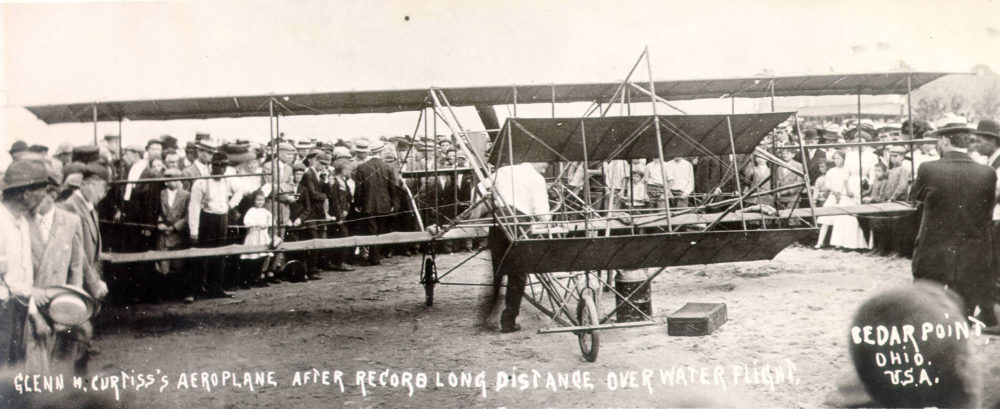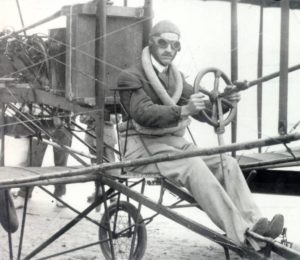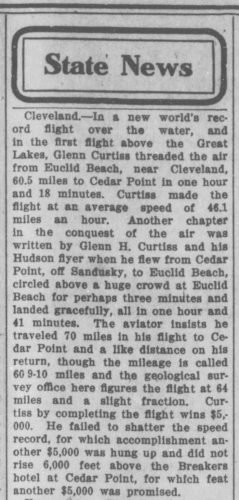Glenn Curtiss and his “Conquest of the Air”

Ohio has its share of famous folks in aviation history, but last week marked an interesting aviation first that, while the pilot was not himself a native, took place along our state’s northern shore.

Glenn Curtiss was born in Hammondsport, New York, on May 21, 1878, and began demonstrating a passion for mechanics and various modes of transportation from an early age. He progressed quickly from an interest in bicycles to motorcycles, and set his first land speed record in 1903 on a motorcycle of his own design and manufacture–a record which stood until 1930. This and later records would, for a time, earn him the nickname “the Fastest Man in the World,” and he quickly earned a reputation among aviation innovators and racing enthusiasts for the lightweight motorcycle engines he built.
In 1907, Curtiss joined with Alexander Graham Bell as part of the Aerial Equipment Association, which designed and built several aircraft including the Red Wing, the White Wing and the “June Bug.” He continued improving aircraft design and pushing the boundaries of manned flight over the next couple of years, and on August 31, 1910, Curtiss piloted a model he called the “Hudson Flyer” in a record-setting flight from Cleveland’s Euclid Beach to Cedar Point in Sandusky, and back again. This feat over Lake Erie was the longest over-water flight to date, and helped to demonstrate to the public that flying would one day be safe and reliable.

Retractable landing gear, like what we use today, had not yet been invented; instead, Curtiss’s plane featured wheels so he could land near the water’s edge and coast up to the beach upon landing. Seen in the cockpit in the photograph above at right, Curtiss also wore an inflatable tube meant to serve as a life preserver in case the plane crashed into Lake Erie!
One week later, the Morrow County Republican reported on Curtiss’s remarkable “conquest of the air.” The article at left, dated September 7, 1910, describes the flight’s distance and rate of speed as well as the other records he was hoping to break, and the prize money he earned for his aeronautic accomplishment. Thanks to the Sandusky Library and Follett House Museum, you can see images from this historic day on Ohio Memory.
Curtiss’s success in the aviation and aeronautics industry continued over the years, and by World War I, the Curtiss Airplane and Motor Company (founded in 1916) was the largest aircraft manufacturer in the world, producing more than 10,000 aircraft, or the equivalent of over 100 per day. In 1929, the company merged with Wright Aeronautical to form the Curtiss-Wright Corporation, which is also well-documented on Ohio Memory and still a leader in the industry today! Curtiss died from complications following an appendectomy at the age of 52, but is remembered today for his pioneering legacy and major contributions to the field of flight–in Ohio and beyond!
Thanks to Lily Birkhimer, Digital Projects Coordinator at the Ohio History Connection, for this week’s post!



Leave a Reply
You must be logged in to post a comment.